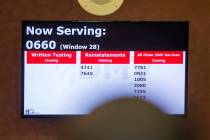Allow broadcast of ObamaCare appeal
It will be the most significant government hearing in at least a decade, a meeting that will shape not just the 2012 elections and the economic recovery, but determine whether Congress can flout the Constitution’s limited government themes with impunity.
And outside of a few lucky citizens, a pool of journalists and a small army of lawyers, no one will be able to see it or hear it in real time — or even on a broadcast delay.
The U.S. Supreme Court announced Monday that it would hear arguments in March on the constitutionality of the Patient Protection and Affordable Care Act — better known as ObamaCare. The law mandates that all Americans buy health insurance by 2014 or pay a penalty tax.
Recognizing the significance of the case — brought by Nevada and 25 other states against the federal government — justices have scheduled 5½ hours for arguments. The last time the court heard as many as four hours of arguments on one case was 2003, when it considered the McCain-Feingold campaign finance reforms.
But justices won’t make special allowances on another tradition: the ban on cameras in federal courtrooms and broadcasts of proceedings. As usual, Americans will have to rely on the accounts of others to learn what transpired.
Citizens have never been afforded the opportunity to watch video recordings or view still photography of Supreme Court hearings. The court does make audio recordings of arguments, but those recordings are not posted to the court’s website (www.supremecourt.gov) until the end of each argument week, on Fridays after conference. Only then can people try to interpret the demeanor behind the words they have read in media accounts.
What you say is one thing. How you say it is another. In the courtroom, that distinction is often the difference between winning and losing.
Given the weight of U.S. Supreme Court decisions and the impact they have on the lives of all Americans, the court’s ban on cameras and broadcasts is beyond silly. It’s an affront to open government. It turns supposedly public proceedings into privileged ones.
States have allowed television cameras and still photography into their courtrooms for decades, and the result has been greater public interest and understanding of the justice system the public pays for. But the Supreme Court stubbornly clings to the notion that cameras merely sensationalize judicial proceedings.
The ObamaCare appeal is plenty sensational as it is. Political fortunes are riding on the appeal’s outcome. The law’s costly, burdensome requirements have been a drag on the recovery. At its core, the law is a massive federal intrusion. It orders citizens to purchase something they might not want to buy. It effectively abolishes federalism by expanding Medicaid and ordering states to take on higher costs.
Americans should be able to witness these arguments for themselves. If justices won’t allow television cameras into the court, they should let TV and radio stations tap into the audio recording equipment and broadcast an audio feed of the arguments. A historic case warrants a historic change in the policies of the court.


















